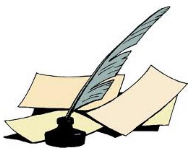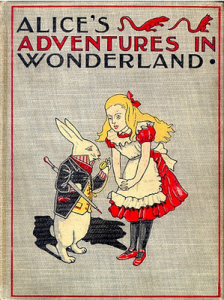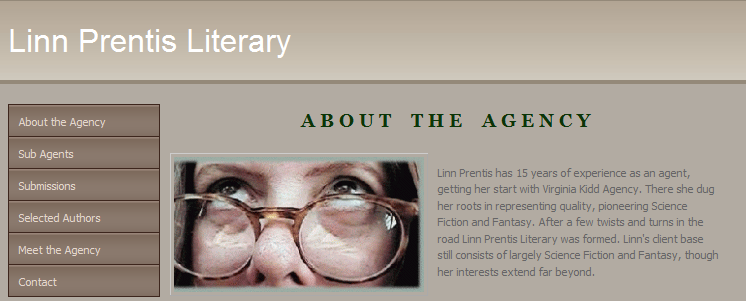 I was just reminded in no uncertain terms that to become successful in almost any endeavor, it’s not just what you know, but who you know.
I was just reminded in no uncertain terms that to become successful in almost any endeavor, it’s not just what you know, but who you know.
Back in December I wrote a post about possible reasons why over 44 agents have rejected my manuscript and ended with the thought that I might have to self publish it. A friend of mine, Kier Salmon, immediately e-mailed me. “Talk to me before you do anything,” she said. “I work in the business and it’s easy to get burned.” The next day I got another e-mail from her telling me that Linn Prentis, the agent she works for, loves tarot decks and wants to see the manuscript.
I was thrilled to the tips of my keyboard tapping fingers. I waited until after the holidays and then e-mailed it to them as an attachment.
And waited…
And waited.
Last week I finally found the reply in my in-box. It was a rejection letter, but of a very different sort. Both Kier and Linn had actually read the entire manuscript and they liked it!
This is huge. When a writer sends an agent an unsolicited manuscript, all the agent wants to see is the query letter, a synopsis, and the first ten pages. She usually only reads the first few sentences of the query letter and if it doesn’t pique her interest she goes on to the next query in her jam-packed in-box. If you’re lucky, she’ll read your synopsis before going on, and if you’re really lucky, she’ll skim over the first 10 pages. Most don’t even send a rejection letter.
When I printed out my rejection letter it came to nearly two pages, single-spaced in 12-point Gill sans font. It was packed with suggestions for improving the manuscript and making it publishable.
- It isn’t formatted quite right. Easy to fix.
- It is too long. Most editors/agents don’t want to plow through a massive debut novel. After trolling the web for acceptable manuscript lengths http://kidlit.com/2009/11/13/manuscript-length/, I found that the consensus placed a YA fantasy manuscript at 70,000 to 80,000 words-90,000 tops. My manuscript is 92,000 words. Many agents and editors will automatically reject a query if the word count is too high. I have some babies to kill—not an easy task. The prologue is a waste of space and the most poorly written part of the story. Can it, they said.
- Molly’s age is unclear. This is not good, especially in YA. I know that Molly is fifteen, she’s been with me for years. I know everything about her. But the reader doesn’t. I do mention once on page 9 that she’s fifteen, but there are no other clues in the early chapters. Her actions could be those of a bratty eight-year-old or a sullen teen. Their fresh eyes caught a vital snag.
- It is unclear how Molly’s grandmother feels about her and what her motives are in sending her only living relative into a dangerous alternate world. It’s made clear later in the manuscript, but the reader should have some earlier clues. “The situation at the book’s start doesn’t gel,” they said.
- The tarot connection doesn’t work; take it out. This was hard news. But then I realized that the most important tarot connection is the fact that each chapter is a major arcana card. I had read that the tarot major arcana taken in order, 0-21, tell the story of the hero’s journey. My main purpose in writing the manuscript was to do this and I did. I am OK with taking out all the other tarot references.
- The story drags in the first few chapters, and this is precisely where a story shouldn’t drag. It must grab the reader right at the get-go or he/she won’t continue reading. These are also the pages an agent/editor will read to judge the story.
- Molly learns the art of sword-craft way too fast. I need to stress the fact that after three months of training she is good but still a beginner. That isn’t apparent in the story.
Kier and Linn essentially quick-edited my manuscript, a process that costs hundreds of dollars, free of charge. When I thanked them, Kier wrote back and said, “No problem. This is what we do.” But I’m quite sure that they don’t often do this for unsolicited manuscripts.
 After ruminating over all this advice and how to go about fixing the problems, it came to me that I’d started Molly’s story in the wrong place. I didn’t realize it at the time, but the King in Alice’s Adventures in Wonderland gave me my first and most potent bit of writing advice when I was just a child. “Begin at the beginning,” he said to the White Rabbit, “and go on till you come to the end: then stop.” This is the way most works of fiction are written because this is the way we live our lives. What comes before is the thing that causes what happens next. Most stories, especially those told by new writers, need to start early enough so the reader understands why the rest of the story goes the way it does and why the characters behave the way they do. This sounds like inanely obvious advice, but it is actually quite difficult to decide where your story actually begins. Hundreds of articles and blog posts and even a few books have been written about this. I hadn’t really started Molly’s story early enough, and so hadn’t given the reader time to get to know her and her grandmother before Molly lands in Damia, a parallel universe, and begins her journey.
After ruminating over all this advice and how to go about fixing the problems, it came to me that I’d started Molly’s story in the wrong place. I didn’t realize it at the time, but the King in Alice’s Adventures in Wonderland gave me my first and most potent bit of writing advice when I was just a child. “Begin at the beginning,” he said to the White Rabbit, “and go on till you come to the end: then stop.” This is the way most works of fiction are written because this is the way we live our lives. What comes before is the thing that causes what happens next. Most stories, especially those told by new writers, need to start early enough so the reader understands why the rest of the story goes the way it does and why the characters behave the way they do. This sounds like inanely obvious advice, but it is actually quite difficult to decide where your story actually begins. Hundreds of articles and blog posts and even a few books have been written about this. I hadn’t really started Molly’s story early enough, and so hadn’t given the reader time to get to know her and her grandmother before Molly lands in Damia, a parallel universe, and begins her journey.
So, it’s back to the drawing board for Forging the Blade. The second book in the series, Mainly by Moonlight, is as finished as I can make it. My first readers have read it and commented; and my writer’s group (headed by Jessica Morrell, my editor) has gone over the first third of it, and I’ve incorporated their revisions. In a few weeks Jessica will review the entire manuscript. The third and maybe final book in the series is plotted and I’ve started writing it.



12 thoughts on “The Good Fairies of the Publishing World”
So good to hear the news about your book. I admire your persistence as you continue creating. Brava!
It must be done! You need to come have lunch with me again.
wow!! amazing info. You go girl!! Molly needs you!!
It’s never boring.
…aaand – nope, cut the chorus! Remember that fiery day at Cement Henge? Sound advice at any time. I’m thrilled to hear that Molly will be approaching the finish line – you’ve given her so much of your love and energy. I can’t wait to see her in print! Go Chrissy!!
Don’t hold your breath. There’s a ton of work to do on the manuscript before I can even start presenting it to agents again.
Not complainin’, just sayin’.
Chrissy, this is such wonderful news – even with the work still in front of you. I’ve reserved a space in our library. Can’t wait! Rebecca
Thank you. It’s comments like yours that keep me going.
A new beacon to light the next part of your journey. This really is wonderful news! I’m excited by the feeling of renewed energy in your post. And super happy for you!
I’ve pretty much got the new beginning written.
I think it will be much better.
The slog will be going through the manuscript and making it agree with the rewrite.
Hugs and thanks to you.
You always know exactly the right thing to say.
They Didn’t Give Up Okay, you’ve gotten a rejection letter from an agent or editor. It feels awful! Maybe it was your first. Maybe it was number sixteen. Whichever it was, don’t despair, you’re standing in really good company, so don’t give up. These authors didn’t. If you are a romance writer, and maybe even if you aren’t, you’ve probably read — or at least watched — Margaret Mitchell’s story, Gone with the Wind. Over 20 publishing houses tuned that little story down before it sold. Who hasn’t heard of John Grisham in this day and age. Did you know that the fist manuscript he wrote, A Time to Kill, was rejected 45 times before it was accepted? Famous western novelist Louis L’Amour has sold countless books over the years. Many of his stories have been made into movies, like The Quick and the Dead — the old one, not the newer version. His stories earned him over 300 rejections before he ever sold a book. Mary Higgins Clark is well known by mystery fans all over the world. She kept wiring and sending out her novels, even after 40 rejections rolled in.
Now this is a great slice o’ spam.
I’ll keep it.